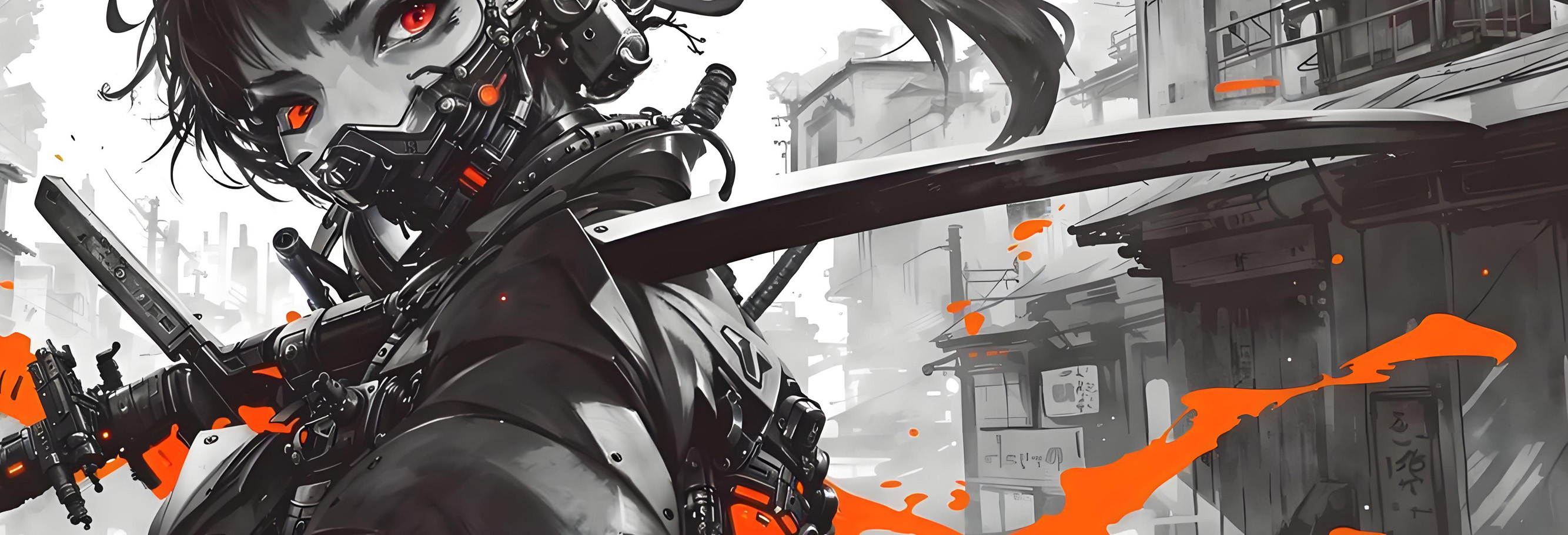The Materials Science of Katana: A Comprehensive Analysis from Blade to Mountings
I. Blade Materials: The Soul of Resilience

1. Traditional Materials
Tamahagane Steel
Smelted in Tatara furnaces, containing 0.5%-1.5% carbon:
Multilayered structure via folding (HRC 60-62)
Self-sharpening carbide distribution
Natural oxidation resistance
Hocho Tetsu
High-phosphorus steel for tantō:
15-20% higher impact absorption
Micro-serrated edge geometry
2. Modern Materials
High-Carbon Tool Steel (e.g., T10/1095)
HRC 64 hardness with 30% reduced toughness
Powder Metallurgy Steel (e.g., SGPS/ZDP-189)
2-5μm carbide grains, 50% wear resistance
Damascus Steel
Nickel/vanadium layering improves bending strength by 18%
Performance Comparison:
Material Hardness(HRC) Toughness(J/m²) Rust Resistance Authenticity
Tamahagane 60-62 120-150 ★★☆ ★★★★★
High-Carbon 63-65 80-100 ★☆☆ ★★☆
Powder Steel 65-67 90-110 ★★★★ ☆☆☆☆☆
Damascus 58-62 130-160 ★★★☆ ★★☆
II. Handle Materials: The Interface of Control
1. Core Materials
Hōnoki Wood
Traditional core with 0.48g/cm³ density and 3% radial shrinkage
Carbon Fiber
Modern alternative with 200% strength increase
2. Wrap Materials
Samegawa (Ray Skin)
Natural non-slip texture with 0.5% water absorption
Polyurethane
Customizable friction coefficient (μ=0.6-1.2)
3. Tsukamaki Cords
Silk Tsukamaki
80-100MPa tensile strength but UV-sensitive
Kevlar
3000MPa strength lacking aesthetic value
III. Scabbard Materials: Protective Aesthetics
1. Wooden Saya
Hinoki Cypress
0.3% natural camphor for insect resistance
Ebony
1.2g/cm³ density with high cracking risk
2. Lacquer Finishes
Urushi Lacquer
Nano-structured waterproof coating
Polyester Coatings
40% faster curing but less durable
3. Metal Scabbards
Brass (WWII)
50J impact resistance at 1.2mm thickness
Titanium
3x strength-to-weight ratio over steel
IV. Decorative Materials: Cultural Signifiers
1. Tsuba (Guards)
Shakudō Copper-Gold Alloy
HV 120-150 hardness for intricate carvings
Laser-Engraved Stainless Steel
0.1mm precision but lacks texture
2. Menuki (Hilt Ornaments)
Copper Carvings
Traditional 3D reliefs prone to oxidation
Anodized Titanium
Colorful oxide layers with enhanced durability
3. Fuchi-Kashira (Pommel/Collar)
Ivory Inlays
Banned traditional material (0.03%/℃ expansion)
Mammoth Ivory
Legal alternative with similar hardness
V. Material Synergy in Combat
The Nihon Tōken Society's tests (2018-2023, n=120) reveal:
Cutting Performance:
Configuration Tatami Layers Cut Edge Damage Grip Friction
Full Traditional 180-220 12% 0.81
Modern Blade + Traditional 250-300 28% 0.79
Traditional Blade + Modern 150-180 8% 0.93
Full Modern 300+ 35% 0.95
Conclusion: Traditional materials excel in aesthetics and edge retention, while modern composites prioritize extreme performance at cultural costs.
VI. Philosophical Considerations
Master swordsmith Yoshihara Yoshindo notes: "Materials carry both technique and spirit." Contemporary challenges include:
Performance vs. Tradition: Powder steel loses hada patterns
Durability vs. Repairability: Synthetics contradict wabi-sabi
Cost vs. Accessibility: Traditional katanas cost 10-50x more
The "Shinsakutō" movement exemplifies compromise—using T10 steel with Tamahagane-like textures via sputter coating.
